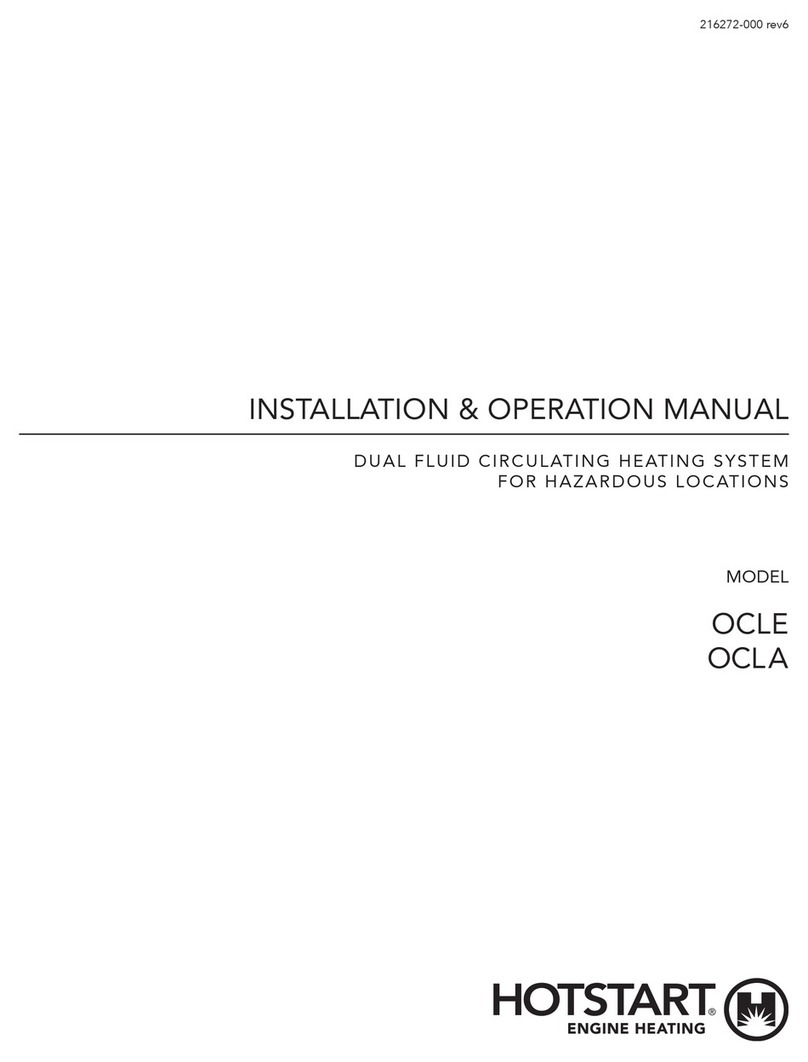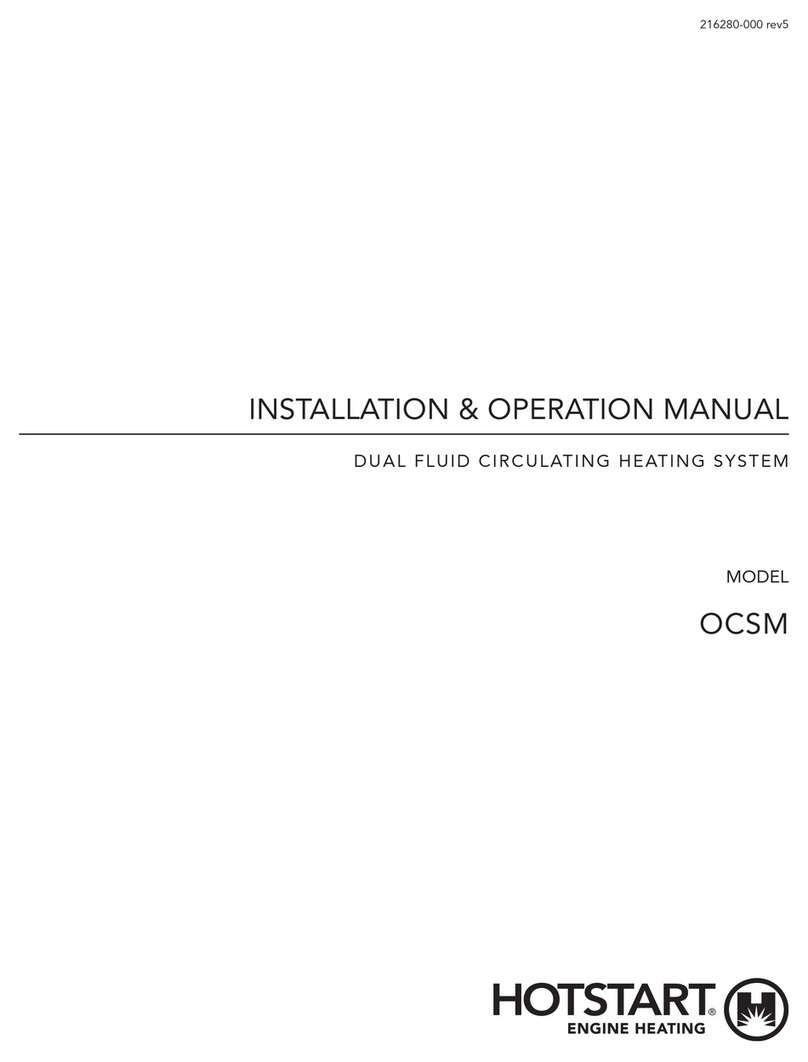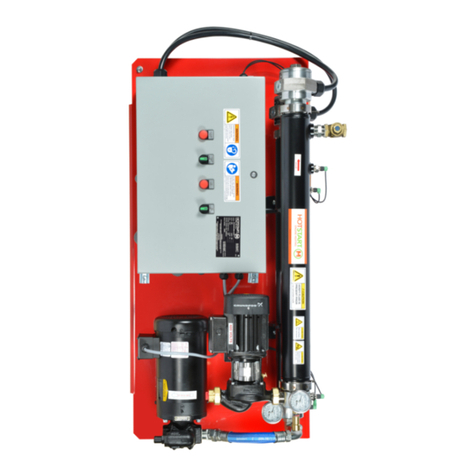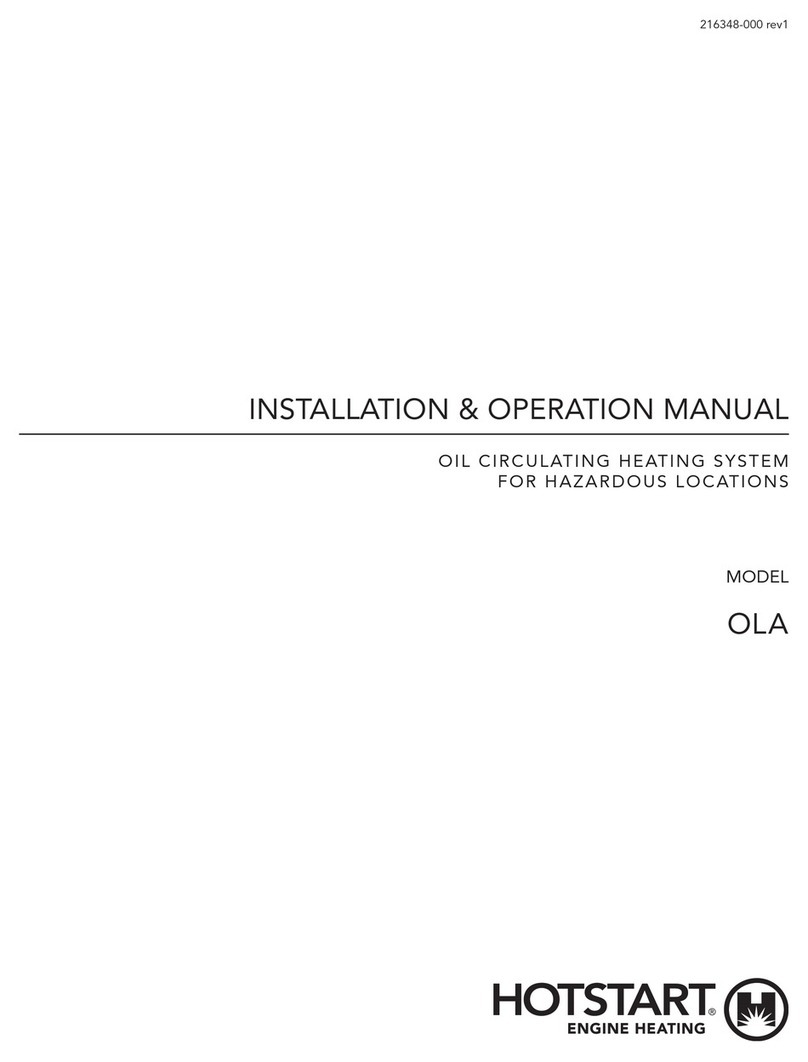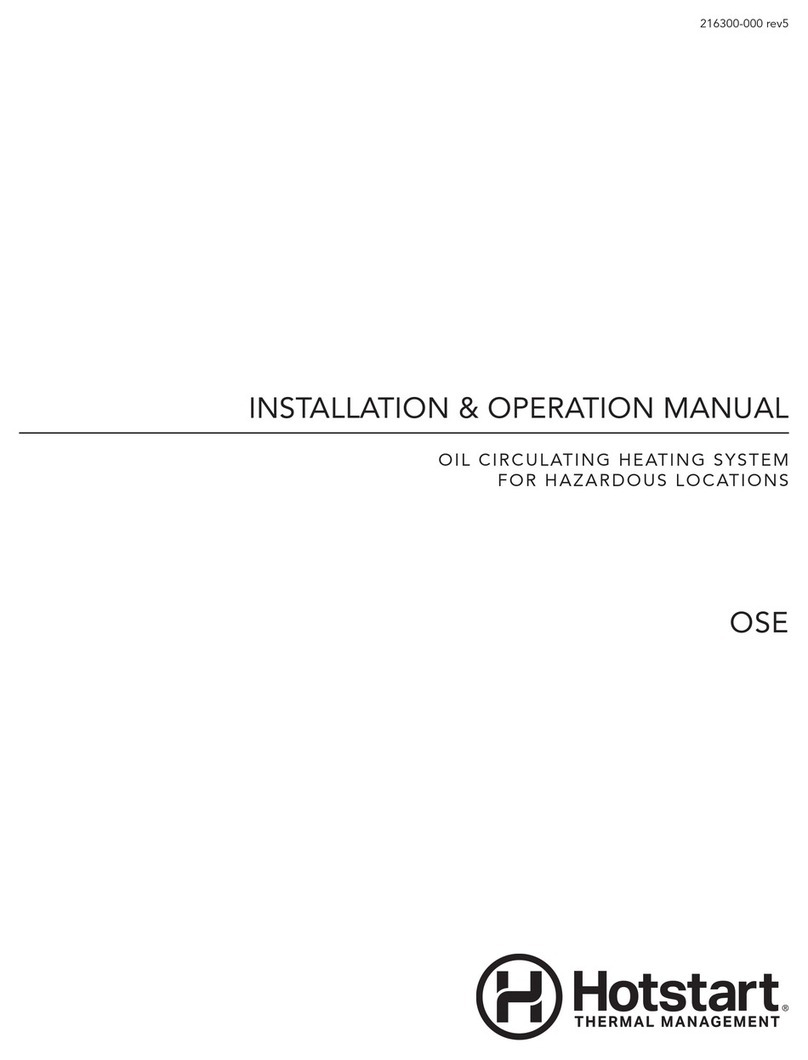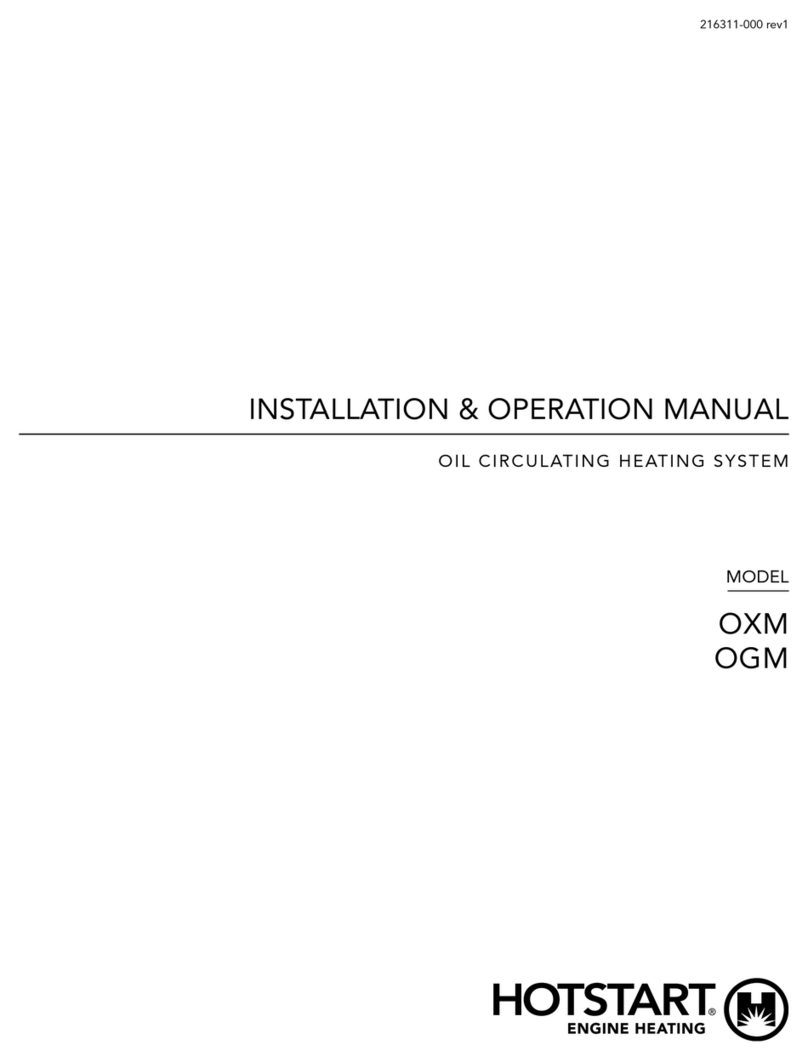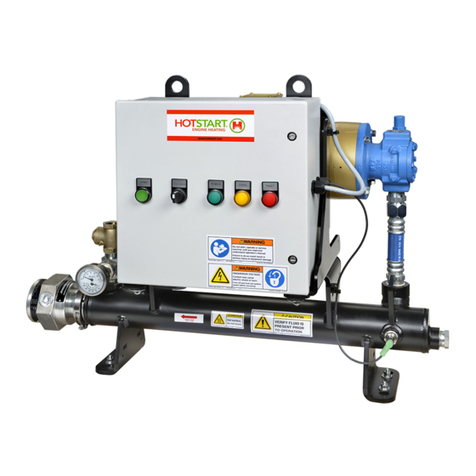
4installation & operation manual | dlv heating system
2.1 OIL PLUMBING
2.1.1 OIL SUPPLY
Installing a short, straight oil supply line with a minimum
of ow restriction is the most important step toward
ensuring heating system longevity. When installing
the DLV oil supply line, refer to the following Hotstart
guidelines (see SECTION 5.1 for optional coolant and
oil install kit components):
PUMP
INLET
HOSE INNER
DIAMETER
MAX. LINE
LENGTH
MAX. ELBOW
COUNT
1 inch
NPT 1-1/2 inch 20 feet
(6 meters) 4
• Due to the increased viscosity of oil, the oil
supply line must be as short and as straight
as possible. Any 90° elbows will reduce the
maximum recommended oil supply length.
See Table 1 for Hotstart DLV oil supply
recommendations:
NOTE: Each additional pair of 90° elbows will reduce
the maximum recommended line length by ve
feet (1.5 meters). To minimize ow restriction,
Hotstart recommends using sweeping bends or
45° ttings.
• At a minimum, size the oil supply line per the
pump inlet. NOTICE! Do not reduce the
supply line inner diameter; pump seal
damage will occur.
NOTE: To maximize ow and allow the longest possible
supply line, install the largest practical inner
diameter hose; for most installations, Hotstart
recommends using a hose with a size larger
inner diameter than the pump inlet.
• Install the oil suction port as low as possible
in the oil tank. NOTICE! Avoid installing
the oil suction port in a location that may
allow debris or sediment to enter the
heating system.
• HOTSTART recommends installing a user-
supplied, swing-type or full-ow check valve
to prevent oil owing into the sump. Install
the check valve as close to the oil supply port
as possible.
2.1.2 OIL RETURN
When installing the DLV oil return line, refer to the
following Hotstart guidelines:
• At a minimum, size the oil return line per
the heating system outlet. NOTICE! Do not
reduce the return line inner diameter.
• Install the oil discharge port near the engine
oil pump, the opposite end of the oil sump or
at the lower P-pipe for railroad applications.
2.1.3 OIL PRESSURE RELIEF VALVE
The oil pump pressure relief valve is internal to the pump
and releases pressure from the discharge side of the
pump to the suction side of the pump at 75 psi (525 kPa).
No plumbing for this component is required.
B
A
Figure 4. Typical oil discharge port (A) installed at locomotive engine
lower P-pipe. Note coolant suction port (B) located at locomotive
main engine drain.
Table 1. HOTSTART recommended hose inner diameters, line
lengths and elbow counts for DLV oil supply lines.
Figure 3. Typical oil suction port installations for railroad applications:
near third inspection cover (above) and through cover (below).





